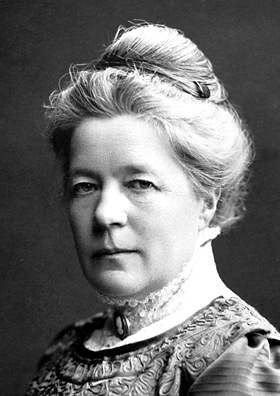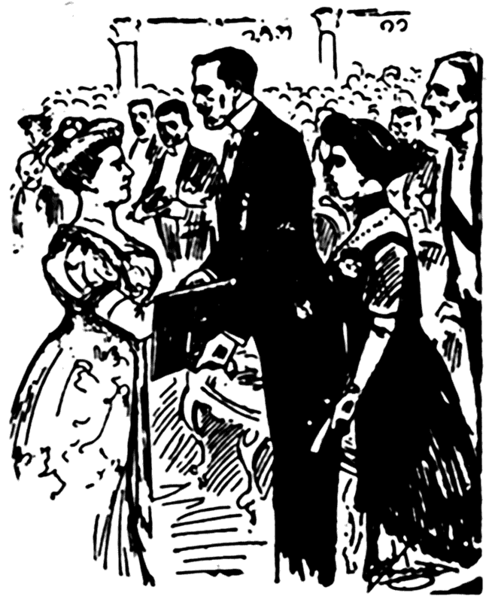<Back to Index>
- Mathematician Benoît B. Mandelbrot, 1924
- Author Selma Ottilia Lovisa Lagerlöf, 1858
- Ruler of Mysore Tipu Sultan, 1750
PAGE SPONSOR


Selma Ottilia Lovisa Lagerlöf (20 November 1858 – 16 March 1940) was a Swedish author. She was the first female writer to win the Nobel Prize in Literature, and most widely known for her children's book Nils Holgerssons underbara resa genom Sverige (The Wonderful Adventures of Nils).
Born at Mårbacka (now in Sunne Municipality) an estate in Värmland in western Sweden, Lagerlöf was the daughter of Lieutenant Erik Gustaf Lagerlöf and Louise Lagerlöf née Wallroth. The couple's fourth child, she was born with a hip injury. An early sickness left her lame in both legs, although she later recovered. She was a quiet child, more serious than others her age, with a deep love of reading. The sale of Mårbacka following her father's illness in 1884 had a deep impact on her development.
Lagerlöf worked as a country schoolteacher in Landskrona for
nearly 10 years while honing her story telling skills, with particular
focus on the legends she had learned as a child. Through her studies at
the Royal Women's Superior Training Academy in Stockholm, Lagerlöf
reacted against the realism of contemporary Swedish language writers
such as August Strindberg. She began her first novel, Gösta Berling's Saga, while
working as a teacher in Landskrona. Her first break as a writer came
when she submitted the first chapters to a literary contest, and won a
publishing contract for the whole book. She received financial support from Fredrika Limnell, who wished to enable her to concentrate on her writing. In
1894 she met Sophie Elkan, also a writer, who became her friend and
companion, and, judging from the letters between them that survive,
with whom she fell deeply in love. Over
many years, Elkan and Lagerlöf critiqued each other's work.
Lagerlöf wrote of Elkan's strong influence on her work, often
disagreeing sharply with the direction Lagerlöf wanted to take in
her books. By
1895, she gave up her teaching to devote herself to her writing. She
and Elkan, with the help of proceeds from Gösta Berlings Saga and
a scholarship and grant, traveled to Italy. There, a legend of a Christ
Child figure that had been replaced with a false version inspired
Lagerlöf's novel, Antikrists mirakler, where she explored the interplay between Christian and socialist moral systems. She
moved in 1897 to Falun, and there met Valborg Olander, who became her
literary assistant, friend, and associate. Elkan's jealousy of Olander
was a complication in the relationship. Olander, a teacher, was also
active in the growing woman suffrage movement in Sweden. In 1900, Lagerlof visited the American Colony in Jerusalem, which became the inspiration for her book by that name.
Most of her stories were set in Värmland, though a trip through continental Europe inspired such works as her The Miracles of the Antichrist, set in Sicily.
Many
of Lagerlöf's works have been adapted to cinema. Already during
the 'Golden Age' of Swedish silent cinema her works were used in film by Victor Sjöström, Mauritz Stiller and other Swedish cinema pioneers. Sjöström's
retelling of Lagerlöf's tales about rural Swedish life, in which
his camera recorded the detail of traditional village life and the
Swedish landscape, provided the basis of some of the most poetic and
memorable products of early silent cinema. Jerusalem was adapted in 1996 into an internationally acclaimed motion picture. In
1909 Selma Lagerlöf won the Nobel Prize "in appreciation of the
lofty idealism, vivid imagination and spiritual perception that
characterize her writings". But the decision was preceded by harsh internal power struggle within the Swedish Academy. In 1914 she also became a member of the Swedish Academy, the body that awards the Nobel Prize in literature. At the start of World War II, she sent her Nobel Prize medal and gold medal from the Swedish Academy to the government of Finland to help raise money to fight the Soviet Union. The
Finnish government was so touched that it raised the necessary money by
other means and returned her medal to her. In 1928, she received an
honorary doctorate from the University of Greifswald's Faculty of Arts. Two hotels are named after her in Östra Ämtervik in Sunne, and her home, Mårbacka, is preserved as a museum. Since 1992, her portrait has been featured on the Swedish 20 krona banknote.